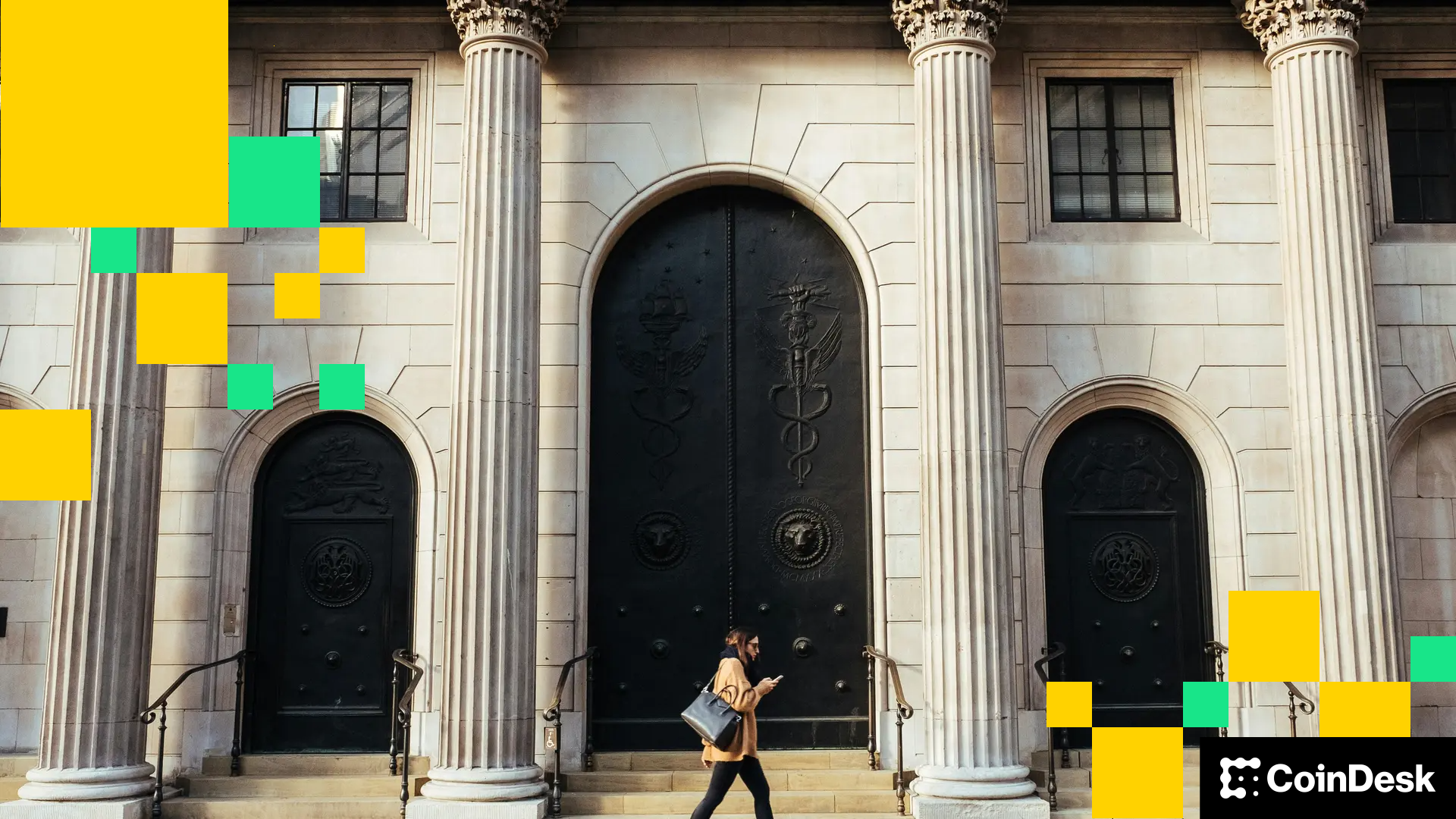Uncategorized
It’s Time to End the Bureaucrat’s Secret Weapon: Debanking

«Debanking» has become a buzzword in Washington lately. The term refers to a controversial practice where crypto companies and other businesses have been cut off from banking services, allegedly due to pressure from federal regulators. Many in our industry have dubbed this «Operation Chokepoint 2.0,» comparing it to a previous Obama-era initiative that discouraged banks from serving certain legal but high-risk industries. The issue has sparked heated debate, with multiple congressional investigations examining whether regulators improperly pressured banks to deny services to crypto firms and other businesses.
I’m testifying before Congress about it today because my company experienced it firsthand, despite being a federally-regulated bank ourselves — and because debanking is widely misunderstood. To address this threat to American values, we first need to understand what happened.
Rather than regulators issuing clear, transparent rules on who banks can serve, debanking operates through a shadowy and democratically unaccountable process whereby regulators warn banks against serving certain types of customers not based on the individual risk they pose, but on hostility or bias towards an entire industry. Banks, facing the threat of enforcement action, penalties, or worse, are left with no choice but to comply. And law-abiding individuals and businesses are cut off from basic banking services, which can be devastating.
Here’s what it looked like for us: in June 2023, we received an urgent call from our bank of two and a half years. Despite an established banking relationship — we were even in active discussions about expanding into new partnerships — the bank abruptly informed us they were closing our account in 30 days because it was not comfortable with our crypto clients’ transactions, even though we told them the funds at issue were client payments for custody fees, and that these were fully documented as part of our rigorous compliance process. Our contact refused to provide any further explanation or allow us to speak to the bank’s risk management team.
Read more: Nic Carter — Why You Should (Still) Care About Silvergate
The irony was stark: we ourselves are a federally chartered bank, regulated and supervised by the OCC, subject to the same stringent capital, liquidity, and risk management expectations as any other national bank. Not once in the course of our partnership had our banking partner ever raised an issue with our account. We were a great bank customer — well-capitalized, well-regulated and well-run. Yet out of the blue, our bank abruptly cut us off with no explanation or recourse. While we were eventually able to find banks willing to partner with us, the impact of being nearly shut out of the banking system was devastating. It was extremely disruptive to our business and our clients, and contributed to the difficult decision we made in 2023 to lay off 20% of our workforce.
And we weren’t alone. Legitimate American businesses across our industry found themselves scrambling for basic banking services, spending time and resources on workarounds rather than innovation and growth, causing major disruption and even driving some out of business.
Regulators’ actions amounted to a de facto ban on banking the crypto industry, made even more destructive by its seemingly arbitrary enforcement — no one knew why some firms retained access while others were cut off, creating a climate of constant uncertainty. To be clear, if regulators had enacted such a major policy decision through proper channels, like formal notice-and-comment rulemaking, that would be one thing. But no rule was ever proposed, publicly debated, or subjected to legal scrutiny. Nor did Congress ever pass legislation to authorize the choking off of large parts of an industry from the federal banking system.
History shows us that without a permanent fix, this will happen again. Just over seven years ago, the FDIC apologized for the first iteration of “Operation Choke Point” — a concerted campaign to cut off banking to industries disfavored by regulators — promising to retrain its examiners. Fast forward to 2023, and those same debanking efforts, this time with a different politically disfavored industry, occurred again. Without action, Operation 3.0 is only a matter of time, and any industry could be the next target.
So how can we prevent this from happening again? Congressional oversight, like the hearing I will testify at today, is crucial to uncover the facts and hold the agencies accountable. Congress must also act to establish real safeguards: consider legislation requiring banks to provide fair access to banking services within the bounds of existing law, require agencies to annually certify that they are not pressuring banks to discriminate against lawful businesses, establish Inspector General whistleblower hotlines at the OCC, FDIC and Federal Reserve to report examiner misconduct, require banks to provide written explanations for account terminations, and mandate clear appeals processes.
Read more: U.S. Regulator Told Banks to Avoid Crypto, Letters Obtained by Coinbase Reveal
Such protections would ensure that no federal regulator can abuse its authority to quietly choke off law-abiding individuals, companies, and industries again. More immediate steps that the new Administration and Congress can take are to rescind the January 2023 joint banking regulators’ guidance that served as the nail in the coffin for many crypto businesses, and rescind the OCC’s interpretive letter 1179, which imposed arbitrary pre-clearance requirements that effectively locked many banks out of crypto activities.
These aren’t just procedural changes — they are essential to protect American innovation and ensure democratic accountability. When regulators have to own their decisions and defend them before the public and the courts, the backroom pressure campaigns end and transparency and rule of law prevails. The scrutiny should be on implied threats from bureaucrats, not on legitimate businesses following the rules. Until these reforms are implemented, everyone is at risk.
Uncategorized
Memecoins Under Pressure as SHIB, Dogecoin Slide After Shibarium Loses $2.4M in Hack

Top meme tokens traded under pressure as a multimillion dollar hack of Shiba Inu’s layer-2 network, Shibarium, dented investor confidence in joke cryptocurrencies.
On Sunday, Shibarium fell victim to a flash loan attack on its validator system, which drained about $2.4 million in ether (ETH) and SHIB. The CoinDesk Memecoin Index has dropped 6.6% in the past 24 hours. The broader market CoinDesk 20 Index (CD20) is down just 2.3%.
The attacker borrowed 4.6 million BONE, the governance token for the Shiba Inu ecosystem, often linked to the decentralized exchange (DEX) ShibaSwap, through a flash loan to gain control of the majority of validator keys. The keys act as gatekeepers of the network, confirming transactions and ensuring security.
With that control, the attacker was able to game the system into approving unauthorized transactions and walk away with a large amount of crypto assets from the bridge that connects Shibarium with the Ethereum blockchain. The process is akin to someone temporarily taking over a bank’s security system to approve unauthorized withdrawals. A flash loan is a loan raised with no upfront collateral and returns the borrowed assets within the same blockchain transaction.
The Shiba inu team was able to prevent a bigger, more serious breach because the BONE tokens used to gain control were reportedly tied to validator 1 and remained locked by the staking rules.
Nevertheless, markets reacted negatively breach, which again underscores the perennial security issues with blockchain technology.
Memecoins drop, broader market bid
SHIB fell by the most in three weeks on Sunday (UTC), losing 4% $0.00001369, and has continued to weaken to trade recently at $0.00001359. The cryptocurrency experienced considerable volatility throughout the 23-hour trading window ended Sept. 15 at 02:00 UTC, with the aggregate range encompassing $0.000006191, a 4% oscillation from peak to trough.
The session commenced with pre-dawn fragility as SHIB retreated from $0.000014156 to establish a pivotal trough of $0.000013547 at 14:00 UTC. Volume of 1.064 trillion tokens surpassed the 24-hour mean, signaling robust distribution pressure and prospective capitulation, according to CoinDesk Research’s technical analysis model.
The BONE token, which initially doubled to over 36 cents, is now down over 2% on a 24-hour basis, trading at around 20 cents.
According to the technical analysis model:
- SHIB established a critical underpinning at $0.000013547 during elevated volume selling pressure exceeding 1.064 trillion tokens.
- The token constructed successive higher lows and consolidation parameters between $0.000013600-$0.000013780.
- Recovery momentum is demonstrated by ascending channel formations with sustained higher lows, indicating potential continuation towards the $0.000014000 resistance.
- Volume patterns exceeded 24-hour averages during the decline phase, confirming potential capitulation levels.
- Terminal hour trading exhibited decisive upward momentum with 1% appreciation, confirming a breach above the resistance threshold.
Large DOGE transfers add to bearish sentiment
Meanwhile, SHIB’s peer dogecoin (DOGE) fell 4% to 27.80 cents on Sunday and has since lost further 5% to 27.36 cents, according CoinDesk data.
A massive transfer of DOGE to a centralized exchange likely added to the bearish mood in the market. According to Whale Alert, crypto exchange OKX received 119,306,143 DOGE, worth over $34 million, from an unknown wallet. Such large transfers are typically associated with an intention to liquidate holdings.
Uncategorized
Fed Rate Decision, MKR-SKY Conversion Deadline: Crypto Week Ahead

The U.S. Federal Reserve is likely to dominate markets, both crypto and traditional, in the coming week. Traders are positioned for a rate cut of at least 25 basis points when the Fed announces its decision on Sept. 17, according to CME’s Fedwatch tool.
What to Watch
- Crypto
- Sept. 16, 12 p.m. ET: Solana AMA on X.
- Sept. 18: Mavryk Network launches its mainnet and native MVRK token.
- Sept. 18: Rex-Osprey Dogecoin ETF expected to begin trading on Cboe BZX Exchange under ticker DOJE.
- Sept. 18: Unipoly Chain (UNP) mainnet launch.
- Macro
- Sept. 16: Brazil July unemployment rate Est. N/A (Prev. 5.8%).
- Sept. 16: Canada August headline CPI YoY Est. N/A (Prev. 1.7%), MoM Est. N/A (Prev. 0.3%); core YoY Est. N/A (Prev. 2.6%), MoM Est. N/A (Prev. 0.1%).
- Sept. 16: U.K. July unemployment rate Est. 4.7%.
- Sept. 17: U.K. August headline CPI YoY Est. 3.9%. MoM Est. N/A (Prev. 0.1%); core YoY Est. 3.7%, MoM Est. N/A (Prev. 0.2%).
- Sept. 17: Canada benchmark interest rate Est. N/A (Prev. 2.75%) followed by a press conference.
- Sept. 17: The Fed’s FOMC decision on U.S. interest rates. Est: 25 bps cut to 4.00%-4.25% followed by a press conference.
- Sept. 17: Brazil benchmark interest rate Est. N/A (Prev. 15%).
- Sept. 18: Bank of England decision on U.K. interest rates. Est: unchanged at 4%.
- Sept. 19: Bank of Japan interest-rate decision. Est: unchanged at 0.5%.
- Earnings (Estimates based on FactSet data)
- Sept. 18: Lite Strategy (MEIP), pre-market
Token Events
- Governance votes & calls
- Curve DAO is voting to changes to donation-enabled Twocrypto contracts. Voting ends Sept. 16.
- Sept. 16: Aster Network to host a community call.
- MantleDAO is voting on keeping the 2025-2026 budget at $52 million USDc and 200 million MNT. Voting ends Sept. 18
- Sept. 18, 6 a.m.: Mantle to host Mantle State of Mind, a monthly townhall series.
- Sept. 16, 12 p.m.:Kava to host a community Ask Me Anything (AMA) session.
- Sept. 23: SwissBorg to make a live announcement.
- Unlocks
- Sept. 15: Starknet (STRK) to unlock 5.98% of its circulating supply worth $17.09 million.
- Sept. 15: Sei (SEI) to unlock 1.18% of its circulating supply worth $18.06 million.
- Sept. 16: Arbitrum (ARB) to unlock 2.03% of its circulating supply worth $48.16 million.
- Sept. 17: ZKsync (ZK) to unlock 3.61% of its circulating supply worth $10.54 million.
- Sept. 18: Fasttoken (FTN) to unlock 2.08% of its circulating supply worth $89.8 million
- Sept. 20: Velo (VELO) to unlock 13.63% of its circulating supply worth $43.39 million.
- Sept. 20: KAITO (KAITO) to unlock 3.15% of its circulating supply worth $10.1 million.
- Token Launches
- Sept. 15: OpenLedger (OPENLEDGER) to be listed on Crypto.com.
- Sept. 18: Deadline to convert MKR to SKY before the delayed upgrade penalty takes effect.
- Sept. 20: Reserve Rights (RSR) to conduct a token burn.
- Sept. 22: Falcon Finance to host community sale on Buidlpad.
Conferences
- Sept.12-15: ETHTokyo 2025 (Tokyo, Japan)
- Sept. 15: TGE Summit 2025 (New York)
- Sept. 15-21: Budapest Blockchain Week 2025 (Budapest, Hungary)
- Sept. 16-17: Real-World Asset Summit (New York)
- Sept. 17: The Bitcoin Treasuries NYC Unconference (New York)
- Sept. 17-19: AIBC 2025 (Tokyo, Japan)
- Sept. 18: CBC Summit USA (Washington)
- Sept. 19: DEF-AI 2025 (Tblisi, Georgia)
- Sept. 17-20: Nomad Capitalist Live 2025 (Kuala Lumpur, Malaysia)
- Sept. 21: XRP Seoul 2025 (Seoul, South Korea)
Uncategorized
Bank of England’s Proposed Stablecoin Ownership Limits are Unworkable, Says Crypto Group

The Financial Times (FT) reported on Monday that cryptocurrency groups are urging the Bank of England (BoE) to scrap proposals limiting the amount of stablecoins individuals and businesses can own.
The group warned that the rules would leave the UK with stricter oversight than the U.S. or the European Union (EU).
According to the FT, BoE officials plan to impose caps of 10,000 british pounds to 20,000 british pounds ($13,600–$27,200) for individuals and about 10 million british pounds ($13.6 million) for businesses on all systemic stablecoins, defined as tokens already widely used for payments in the U.K. or expected to be in the future.
The central bank has argued the restrictions are needed to prevent outflows of deposits from banks that could weaken credit provision and financial stability.
The FT cited Sasha Mills, the BoE’s executive director for financial market infrastructure, as saying the limits would mitigate risks from sudden deposit withdrawals and the scaling of new systemic payment systems.
However, industry executives told the FT the plan is unworkable.
Tom Duff Gordon, Coinbase’s vice president of international policy, said “imposing caps on stablecoins is bad for U.K. savers, bad for the City and bad for sterling,” adding that no other major jurisdiction has imposed such limits.
Simon Jennings of the UK cryptoasset business council said enforcement would be nearly impossible without new systems such as digital IDs. Riccardo Tordera-Ricchi of The Payments Association told the FT that limits “make no sense” because there are no caps on cash or bank accounts.
The U.S. enacted the GENIUS Act in July, which establishes a federal framework for payment stablecoins. The law sets licensing, reserve and redemption standards for issuers, with no caps on individual holdings. The European Union has also moved ahead with its Markets in Crypto-Assets Regulation (MiCA), which is now fully in effect across the bloc.
Stablecoin-specific rules for asset-referenced and e-money tokens took effect on June 30, 2024, followed by broader provisions for crypto-assets and service providers on Dec. 30, 2024. Like the U.S. approach, MiCA does not cap holdings, instead focusing on reserves, governance and oversight by national regulators.
-

 Business11 месяцев ago
Business11 месяцев ago3 Ways to make your business presentation more relatable
-

 Fashion11 месяцев ago
Fashion11 месяцев agoAccording to Dior Couture, this taboo fashion accessory is back
-

 Entertainment11 месяцев ago
Entertainment11 месяцев ago10 Artists who retired from music and made a comeback
-

 Entertainment11 месяцев ago
Entertainment11 месяцев ago\’Better Call Saul\’ has been renewed for a fourth season
-

 Entertainment11 месяцев ago
Entertainment11 месяцев agoNew Season 8 Walking Dead trailer flashes forward in time
-

 Business11 месяцев ago
Business11 месяцев ago15 Habits that could be hurting your business relationships
-

 Entertainment11 месяцев ago
Entertainment11 месяцев agoMeet Superman\’s grandfather in new trailer for Krypton
-

 Entertainment11 месяцев ago
Entertainment11 месяцев agoDisney\’s live-action Aladdin finally finds its stars





